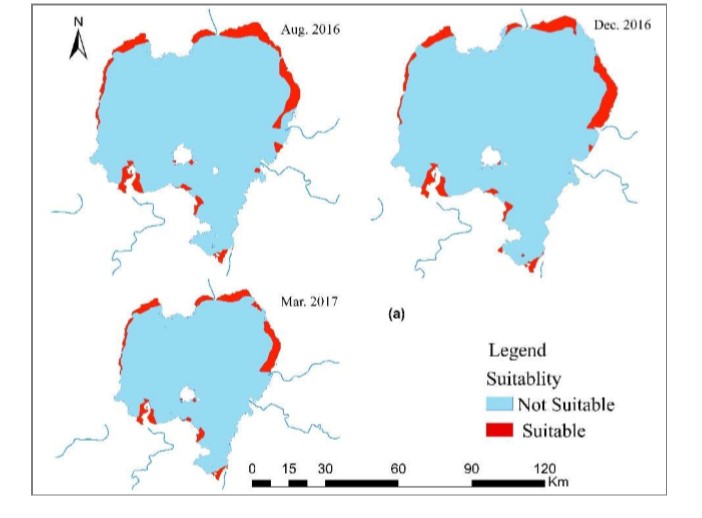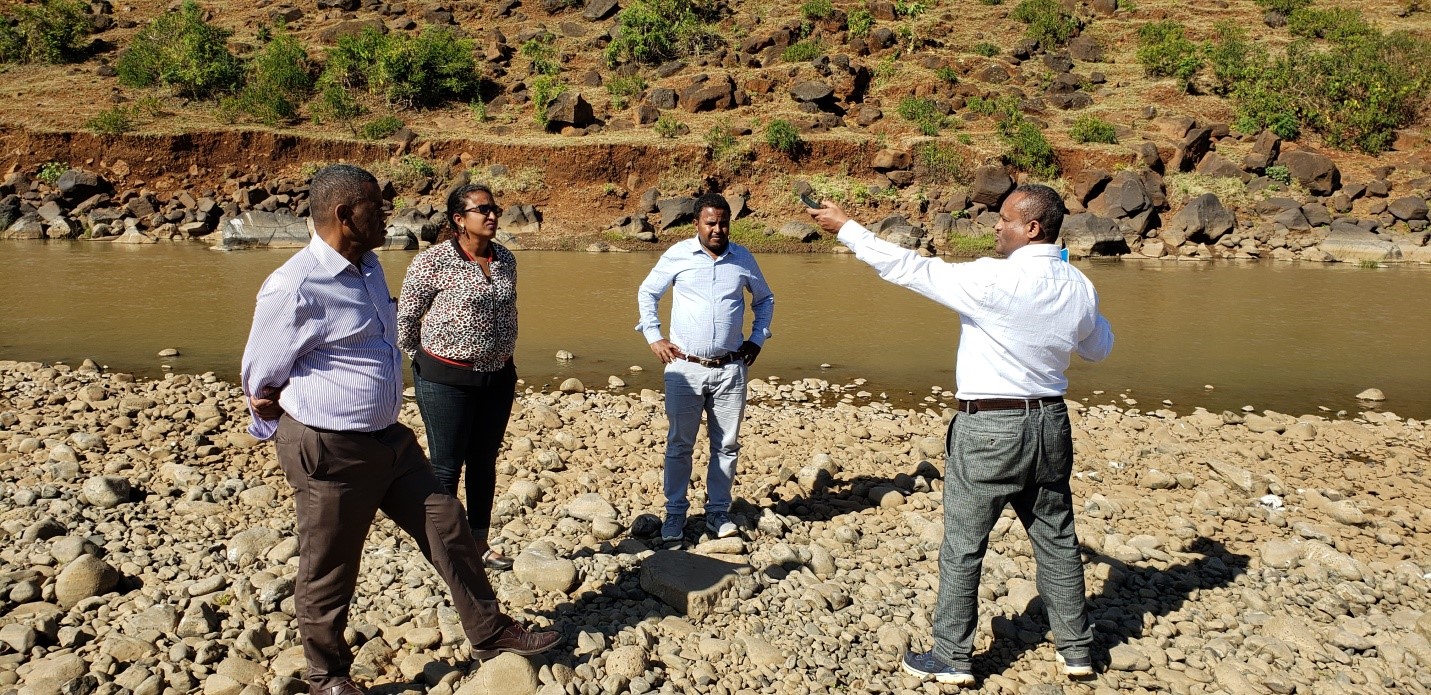Helping Lake Tana fight the Water Hyacinth menace

Lake Tana is the most important freshwater lake in Ethiopia, holding up to 50% of the country’s water and serving as the main source of the Blue Nile, which provides valuable ecosystem services. The lake was recognized by The United Nations Educational, Scientific and Cultural Organization (UNESCO) as a hotspot of biodiversity, an Important Bird Area and a site of global importance for agricultural genetic diversity.
Lake Tana besieged by the deadly hyacinth.
Authors: Lulseged Tamane and Wuletawu Abera
Water hyacinth is an invasive weed posing a grave threat to Lake Tana. A growing problem since 2011, the dangerous aquatic weed currently covers over 197 km in seven districts of the Amhara region and continues to expand rapidly.
The deadly plant possesses serious ecological and socio-economic problems including reducing water quality and flow, interfering with water transport, affecting the hydropower and water supply system, and restricting water flow to irrigation canals. Ultimately, these affect agricultural production, and smother aquatic life by deoxygenating the water. This also has dramatic implications for the approximately two to three million people who depend on the ecosystem services provided by Lake Tana for their livelihoods, directly or indirectly.
Unfortunately, the exact causes of the rapid infestation of water hyacinth on the Lake are yet to be clearly established. Despite the fact that various studies are underway to understand the drives and impacts, there remains a need to bring in interdisciplinary experts to conduct comprehensive analyses and suggest remedial solutions.
In order to have a better understanding of the cause, as well as the ecological and socio-economic impacts of water hyacinth on Lake Tana and the surrounding communities, the International Center for Tropical Agriculture (CIAT) (now part of the Alliance of Bioversity International and CIAT, hereafter “the Alliance”) has engaged Bahir Dar University and the Amhara Regional Agricultural Research Institute (ARARI) as well as other partners in the region. In order to avoid duplication of efforts, the Alliance has collaborated with existing studies to support their gaps. Currently the Alliance is supporting three PhD students conducting their research on the actual cause for the wide spread of water hyacinth and its impact on fish, which is the main source of livelihood for many living around the lake.
The Alliance team visited the research sites of the three PhD students to see the progress of their research in December 2019. The first, Minychl Gitaw, is a lecturer and chair member of engineering hydrology at Bahir Dar Institute of Technology, and is conducting his research on the cause and favoring factors for the rapid expansion of water hyacinth on Lake Tana.
“Even though water hyacinth is also present on the rift valley lakes, the rate of expansion is very rapid on Lake Tana,” he says.
Minychl goes on to argue that understanding the favorable conditions nurturing the rapid expansion of water hyacinth is vital in winning the fight against this invasive weed. So far, there are various efforts made to clear out water hyacinth from Lake Tana but they have not yielded significant results.

Minyicil Gitaw (PhD researcher) and Dr. Lulseged Tamane (Alliance senior scientist) discuss the spatial extent of water hyacinth on a boat during one field visit.

Predicted suitable areas for water hyacinth growth in different months, made using multi criteria analysis.
Ms. Berhan Mohamed, a researcher in the Bahir Dar Fisheries and other Aquatic Life Research Center under ARARI, is conducting her research on the impact of water hyacinth on fish and other aquatic life on Lake Tana. “In other African countries, many research studies have been conducted regarding the impacts of water hyacinth, but here in Ethiopia more focus is given to the coverage of the weed,” she explains. While there is a general understanding of the adverse impact of water hyacinth on fish and other aquatic life, it has not been quantified. In her opinion, quantitative results must be provided in order to facilitate informed decision-making.

Dr. Lulseged Tamane, Ms. Berhan Mohamed, Dr. Wuletawu Abera, and Mr. Wubneh Belete (from left to right) on a field visit along Gumera river. Wubneh Belete is explaining how water flow dynamics affect the ecohydrological habitat in the stream.
“Due to changes within the landscapes of the lake caused by natural and human process, plenty of impacts are observed on the eco-hydrological processes and terrestrial as well as aquatic habitat”, observed Wubneh Belete.
His PhD study focuses on water hyacinth in one of the key tributaries to lake Tana – Gumara.
During the visit to the research sites on Lake Tana which extended to the nearby production areas including Fogera and Gumera, Dr. Lulseged Tamene, a senior scientist at the Alliance, emphasized the importance of integrated and interdisciplinary approaches to understand such dynamic processes of water hyacinth, the drivers as well as possible solutions. Noting that the PhD students have lots of complementarities, he advised them to collaborate and work together.
“Harnessing such potential can lead to comprehensive solutions,” he added.
The Alliance, in partnership with the USAID-funded Africa RISING project and the CGIAR Program on Water, and Land and Ecosystems (WLE) are supporting the three students so that they can capitalize on this great potential.
Going forward, the team will work on building an interdisciplinary approach through various collaborations. Because of the complexity of the issue, there may be more than one solution to tackle the problem. Consequently, the project seeks to highlight the spatio-temporal distribution of the invasive species, map hotspot areas of intervention, identify major drivers, and suggest solutions.
Plans are underway to use high-resolution satellite images to map and monitor trends of hyacinth invasion and identify the hot spot areas within the lake catchments that could accelerate hyacinth development using high resolution satellite imagery. In addition, they will refer to available historical data related to the ‘lake water chemistry’ over time and across space in order to develop a modelling scheme identifying major drivers that contribute to the growth of hyacinth. Through these efforts, the team is looking forward to the development of possible solutions to help curtail the expansion of hyacinth within the lake and beyond.
